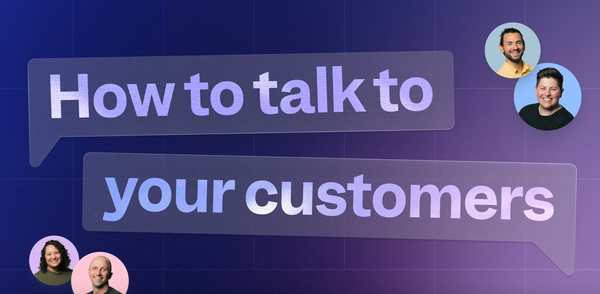Fund Starvation: Boon or Bane for Startups?

How to Raise $25M in VC, Get Acquired, and Make No Money: A Startup Case Study
Raising significant venture capital, getting acquired, and yet making no personal financial gains is a scenario not uncommon in the startup ecosystem. This case study of Acme, Inc. provides insights into the journey of a startup that achieved early success but faced significant challenges as it grew. Here’s a detailed look at their five-year journey.
Year 1: Initial Success and Seed Funding
John and Amy, two ambitious entrepreneurs, decide to start Acme, Inc., targeting a niche vertical SaaS market. They identified a gap in the market dominated by a billion-dollar company with an outdated solution, presenting a prime opportunity for disruption.
Timeline and Metrics:
- Month 4: Initial software development is complete, gaining early traction.
- Month 6: They secure a $500K seed investment.
- Year-End Metrics:
- Customers: 25
- Average Revenue per Customer: $20K/year
- Total Revenue: $500K ARR
- Employees: 5 (plus contractors)
- Total Funding: $500K
- Total Expenses: $90K/month
By the end of the first year, with initial funds running low, Amy suggests focusing on growing their revenue to $1M before seeking further funding. However, their lack of go-to-market (GTM) experience and advice from their seed investor lead them to pursue a Series A round instead.
Year 2: Growth and Series A
By month 14, Acme, Inc. secures a $6M Series A at a $40M valuation. The next year is spent building a team to drive growth, aiming to capitalize on their early success.
Year 2 Metrics:
- Customers: 175
- Average Revenue per Customer: $16K/year
- Total Revenue: $2.8M ARR
- Employees: 24 (plus contractors)
- Total Funding: $6.5M
- Total Expenses: $380K/month
Despite their growth, they face hiring mistakes and struggle to achieve Product-Market Fit (PMF). These challenges begin to hint at underlying issues that would later escalate.
Year 3: Expansion, Churn, and Series B Funding
Acme raises an additional $18M at a $150M valuation, bringing their total funding to $24.5M in just three years. However, they face a dilemma: their high valuation prevents them from accepting an acquisition offer. Following board advice, they aim to compete with larger vendors by targeting enterprise customers and increasing prices.
Year 3 Metrics:
- Customers: 350
- Average Revenue per Customer: $24K/year
- Total Revenue: $7.8M ARR
- Employees: 68 (plus contractors)
- Total Funding: $24.5M
- Total Expenses: $1.5M/month
- Churn: 30%
The increased prices and competition lead to a rise in churn, threatening the business. To combat this, they hire a Director of Customer Success (CS) and expand the CS team to 15 members. Unfortunately, these measures do not stem the tide of increasing churn and rising costs.
Year 4: Market Challenges and Leadership Changes
In its fourth year, Acme, Inc. reaches $10M in revenue, but growth stalls as their Total Addressable Market (TAM) shrinks. New competitors and a price war exacerbate the situation, pushing churn to 45%.
Year 4 Challenges:
- Increased churn despite a dedicated CS team.
- Rising operational costs.
- Board intervention leads to a leadership overhaul, with a new CEO and management team replacing the founders.
Year 5: The End and Acquisition
Despite efforts to stabilize the company, nothing works. Acme, Inc. accepts an acquisition offer from their largest competitor for $35M, an amount barely sufficient to cover the preference shares. The founders walk away with no financial gains, while investors and founders publicly celebrate the "successful" exit on LinkedIn.
Lessons Learned: Where Did the Founders Go Wrong?
- Timing of Fundraising:
- Raising $6M too early may have been a misstep. Without a clear Product-Market Fit, the influx of capital led to rapid scaling without a solid foundation.
- Price Increases and Market Positioning:
- The decision to increase prices and move towards the enterprise market, driven by investor advice, contributed to high churn. A more cautious approach could have preserved their customer base.
- Product-Market Fit and Customer Success:
- The struggle with achieving Product-Market Fit and subsequent high churn rates indicated a misalignment between the product and customer needs. Investing more in understanding and aligning with their market could have mitigated this issue.
- Leadership and Team Building:
- Early hiring mistakes and a lack of experienced leadership in key areas like GTM strategy and customer success were significant hurdles. Bringing in experienced leaders earlier might have helped navigate these challenges.
- Board and Investor Dynamics:
- The influence of investors and the board on strategic decisions, such as pricing and market focus, played a crucial role. Founders need to balance investor advice with their vision and market understanding.
Conclusion: Navigating the Startup Journey
Acme, Inc.'s journey highlights common pitfalls in the startup ecosystem: the allure of early funding, the challenges of scaling, and the importance of product-market alignment. For founders, it’s crucial to maintain a clear vision, make informed decisions, and balance growth with sustainability.
SEO Keywords:
- Startup case study
- Raising venture capital
- SaaS market
- Series A funding
- Series B funding
- Product-market fit
- Customer success
- Churn management
- Startup growth challenges
- Startup acquisition
By analyzing and learning from such case studies, new startups can better navigate their journey, avoiding common mistakes and making strategic decisions that lead to sustainable growth and success.


